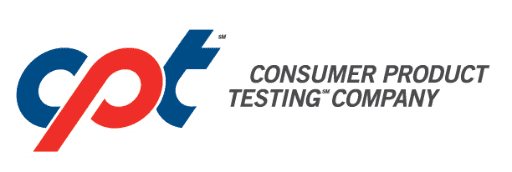Due to the worldwide COVID-19 pandemic, attention continues to be focused upon the use of hand sanitizers as an important part of everyone’s personal hygiene program in an attempt to safeguard health. We all use hand sanitizers at home, at work and even in public places where hand sanitizer dispensers are now a common sight in stores, restaurants, government buildings and even gas stations. As a result, the demand for hand sanitizers remains at a very high level. The continuing availability of these products is of paramount concern to consumers and to the United States Food & Drug Administration (FDA).
If a fuel or technical grade Ethyl Alcohol exceeds the limit for any individual impurity defined within the Interim Limits, it may not be used in a hand sanitizer product. In cases where a fuel or technical grade Ethyl Alcohol meets the requirements for each individual impurity but exceeds the Sum of All Other Impurities, the Ethyl Alcohol must meet all of the following additional impurity limits in order to be used in a hand sanitizer:
7. The water that is used in a finished hand sanitizer must be sterile, meeting the requirements for USP Purified Water.

Prior to the COVID-19 Pandemic
Prior to the COVID-19 pandemic, all over-the-counter (OTC) hand sanitizers were introduced into the US market via a single regulatory pathway, i.e., the OTC-Drug Monograph. Under the OTC Drug Monograph Final Rule for hand sanitizers for consumer usage, only three (3) active ingredients are eligible for usage: Ethyl Alcohol, Isopropyl Alcohol and Benzalkonium Chloride. (Each active ingredient is allowed singly in a hand sanitizer, but not in combination with any of the others.) Any OTC hand sanitizer was required to satisfy all requirements established within the OTC Drug Monograph Final Rule and in addition, was required to meet all requirements found in the Current Good Manufacturing Practices for Finished Pharmaceuticals (CGMP) regulations as published in 21 CFR Parts 210 and 211.FDA Temporary Policy During the COVID-19 Pandemic
So as to ensure the availability of hand sanitizers during the COVID-19 pandemic, in March 2020 FDA issued a “Temporary Policy” which loosened the requirements for introducing these products into the US market. Since March 2020, FDA has continued to issue a steady stream of refinements and clarifications to their Temporary Policy. These refinements and clarifications apply to the finished hand sanitizer products themselves and the source and quality of the alcohol that is used in their formulation. Following is a list of the current requirements which apply to hand sanitizers launched in accordance with FDA’s Temporary Policy as extrapolated from the various updates issued through September 21, 2020.Requirements for Hand Sanitizers Launched Under FDA Temporary Guidelines
- The finished hand sanitizer must be manufactured in an FDA-registered GMP facility, a state-licensed Compounding Pharmacy or Federal licensed compounding facility.
- The firm distributing the finished hand sanitizer must register with FDA as a GMP facility and list these products in accordance with FDA requirements for Drug Listing.
- Only alcohol-based hand sanitizers meeting FDA Temporary Policy / World Health Organization (WHO) formulations are acceptable. The finished hand sanitizer must contain either Ethyl Alcohol at a minimum 80 % v/v concentration or Isopropyl Alcohol at a minimum of 75% v/v concentration. (Benzalkonium Chloride is not a permitted active ingredient under FDA’s Temporary Policy.)
- The finished hand sanitizer must be a liquid product containing only those ingredients listed in the FDA Temporary Policy / WHO formulations. Gels, foams or aerosol sprays are not allowed.
- The finished hand sanitizer must be labeled in strict compliance with FDA Temporary Policy.
- If the Ethyl Alcohol used in the formulation is not USP or FCC Grade, fuel or technical grade Ethyl Alcohol may be used, HOWEVER, it must not contain gasoline or any of its components (e.g., n-heptane) and it must be tested for all of the following FDA Interim Limits of Impurities:
| IMPURITY | LIMIT Under This Temporary Policy |
| Methanol | NMT 630 ppm |
| Benzene | NMT 2 ppm |
| Acetaldehyde | NMT 50 ppm |
| Acetal (1,1-Diethoxyethane) | NMT 50 ppm |
| SUM OF ALL OTHER IMPURITIES | NMT 300 PPM |
| IMPURITY | LIMIT Under This Temporary Policy |
| Acetone | NMT 4,400 ppm |
| n-Propanol (1-Propanol) | NMT 1,000 ppm |
| Ethyl acetate | NMT 2,200 ppm |
| Sec-Butanol (2-Butanol) | NMT 6,200 ppm |
| Iso-Butanol (2-Methyl-1-propanol) | NMT 21,700 ppm |
| n-Butanol (1-Butanol) | NMT 1,000 ppm |
| Iso-Amyl Alcohol (3-Methyl-1-Butanol) | NMT 4,100 ppm |
| Amyl Alcohol | NMT 4,100 ppm |
Issues of Concern and Specific Abuses of FDA’s Temporary Policy
Unfortunately, this temporarily relaxed regulatory environment relating to the manufacturing of hand sanitizers has led to an influx of opportunists and unqualified organizations into the hand sanitizer supply chain. As a result, FDA is finding illegal and in some instances, dangerous products on store shelves. Examples include products containing Methanol (“wood” alcohol) and other organic chemicals that are highly toxic; combinations of alcohols which are not permitted under the OTC Drug Monograph or the Temporary Policy; subpotent levels of alcohol, and the inclusion of excipient ingredients not permitted under the Temporary Policy.Let CPT℠ assist in the protection of your “brand” and your reputation.
Since it has been clearly shown that there are illegal and in some instances, dangerous hand sanitizer products being offered for sale within the US during this COVID-19 pandemic, every product owner should be concerned about the quality of the products that they purchase for distribution. CPT can provide the required testing of Ethyl Alcohol and Isopropyl Alcohol raw materials. We can also conduct screening of finished hand sanitizers with fast turnaround times. We can tell you if the product you have purchased or are considering to purchase is a legal product, free from disallowed ingredients and toxic impurities. CPT℠’s state-of-the-art Analytical Chemistry Laboratory is professionally staffed and stands ready to assist you in actively protecting your “brand” and your reputation as a whole. Why not contact us today?

